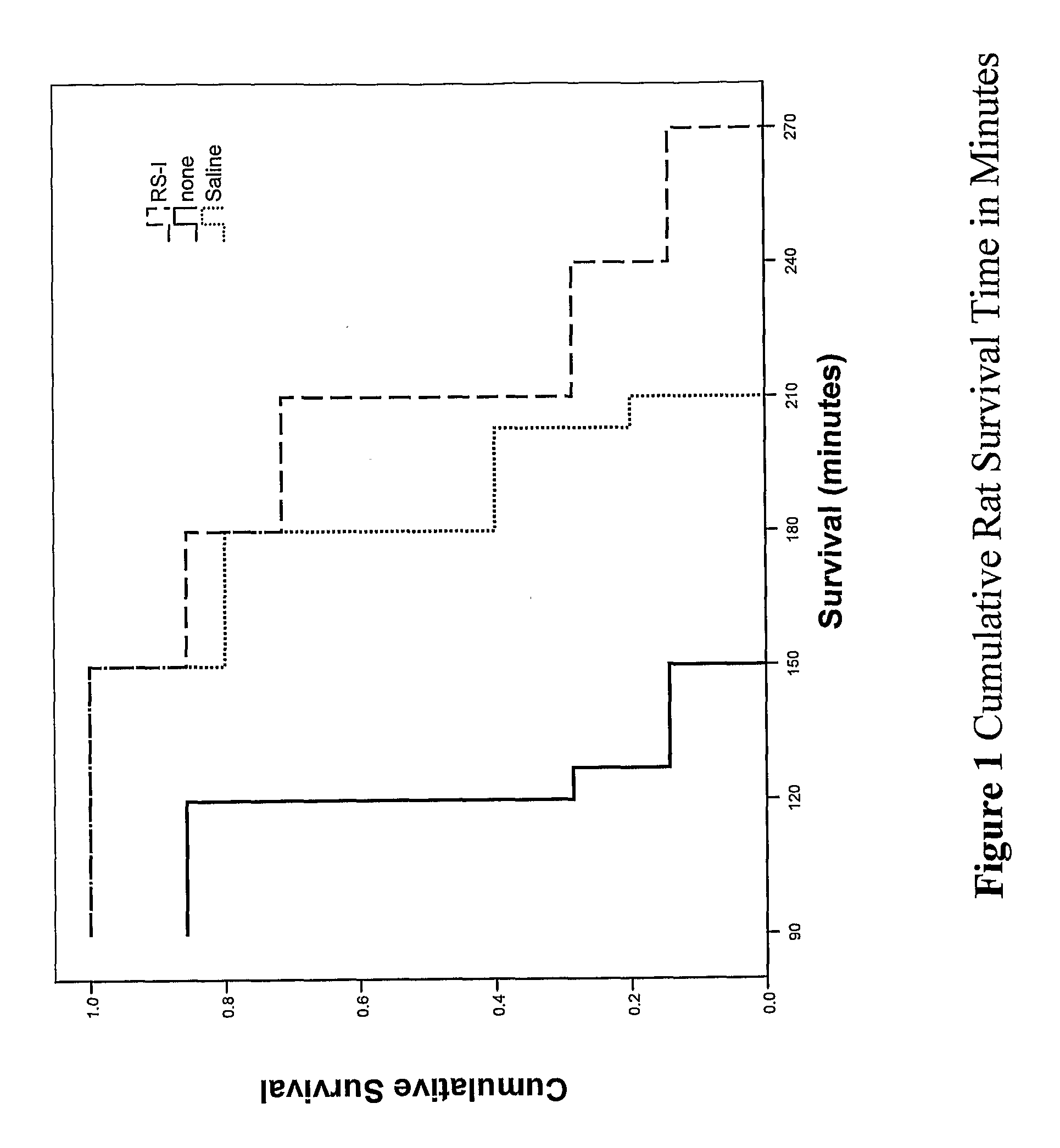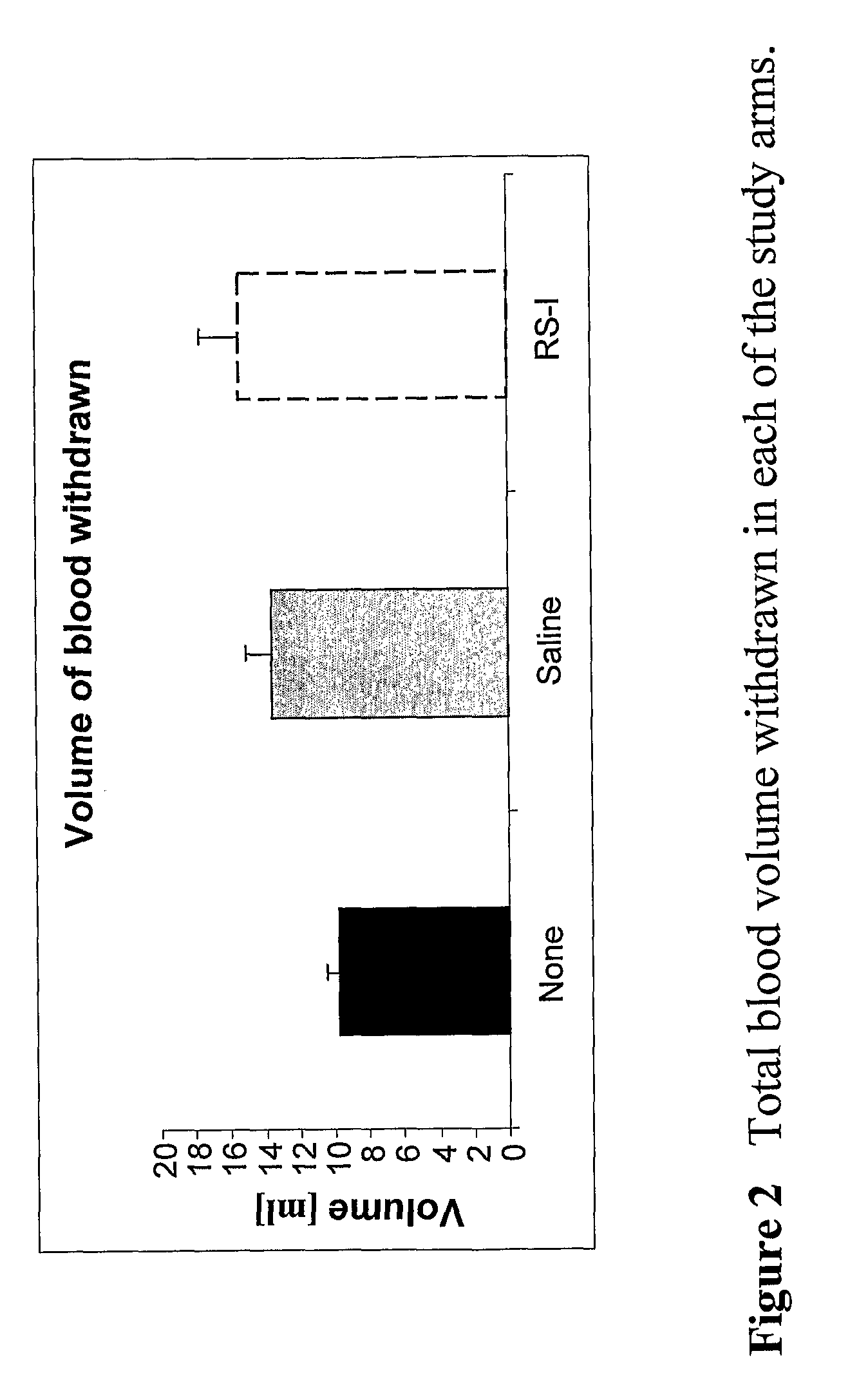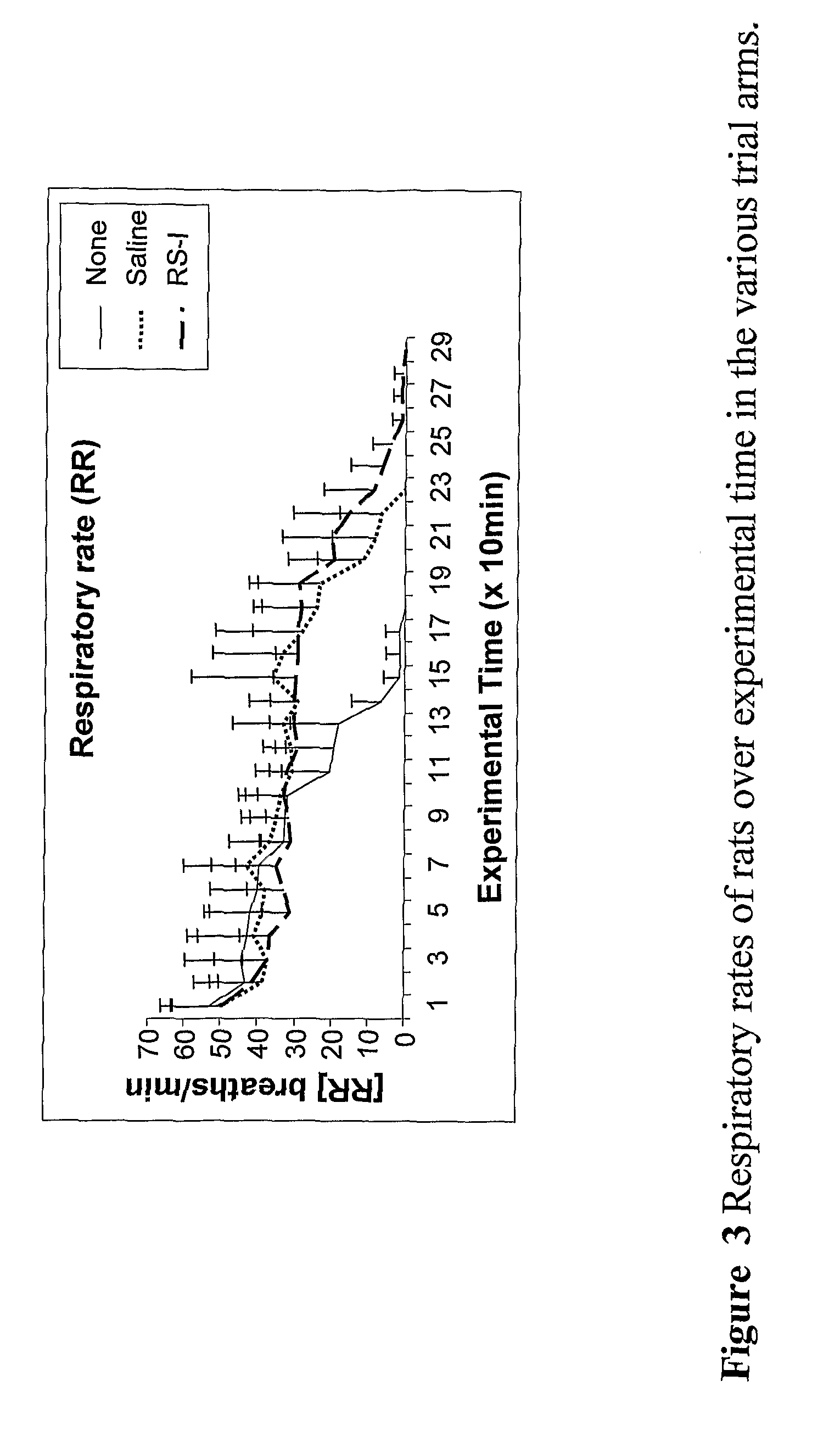Body fluid expanders comprising n-substituted aminosulfonic acid buffers
a technology of body fluid and aminosulfonic acid, which is applied in the direction of biocide, plant growth regulators, pharmaceutical non-active ingredients, etc., can solve the problems of reducing the necessary supply of blood (and oxygen) to essential organs and tissues, reducing and causing significant loss of blood volume resulting from hypovolemia. , to achieve the effect of preventing or lowering the incidence of reperfusion injury
- Summary
- Abstract
- Description
- Claims
- Application Information
AI Technical Summary
Benefits of technology
Problems solved by technology
Method used
Image
Examples
example 1
Formulation of RS-I Solution
Formulation
[0095]In the following preparations, endotoxin-free Milli-Q purified water (Millipore Corp, Milford, Mass.) or equivalent ASTM Type I water [resistivity no more than 18.0 MΩ-cm at 25° C.] was used throughout, both in the initial stirring, and in the final dilution. The term ‘purified water’ is used hereinafter to denote water of this quality.
[0096]Thiamine pyrophosphate (cocarboxylase), Sigma C4655 was prepared as a 0.4 mg / mL stock solution in purified water and stored frozen in dark glass vials. Choline chloride (Sigma C7527) was prepared as a 17.5 mg / mL stock solution in purified water and stored frozen in glass vials. Human recombinant insulin (Sigma 10259 / 12643) was prepared as a 0.5 I.U. / mL stock solution in purified water acidified to pH 2.4 with 0.12N hydrochloric acid and stored frozen in glass vials.
[0097]For the preparation of a 10× concentrate solution of RS-I solution, a stainless steel container was filled with 8 litres of purified...
example 2
Final Composition of RS-I Solution
[0117]The following Table summarises the composition of RS-I solution for use as a body fluid expander.
TABLE IComponentConcentrationNaCl110.00mmoles / LKCl5.00mmoles / LCaCl21.25mmoles / LMgCl20.45mmoles / LNaHCO325.0mmoles / LBES5.00mmoles / LD-Glucose10.00mmoles / LGlycerol0.11mmoles / LL-Glutamate0.30mmoles / LL-Glutamine0.40mmoles / LL-Aspartate0.02mmoles / LL-Carnitine0.05mmoles / LCholine Chloride0.01mmoles / LTPP (cocarboxylase)40.00nmoles / LHuman recombinant insulin28mIU / L
[0118]The solution described in Examples 1 and 2 and referred to herein as RS-I represents a preferred form of the body fluid expander solution in accordance with the invention.
example 3
A Comparison of the Chemical Constituents of RS-I, Human Serum and Human Interstitial Fluid
[0119]At the present time, and according to the prevailing thinking in the art, the formulation of preservation, perfusate and blood volume replacement solutions is strongly inclined towards adopting the composition of either the intracellular or the extravascular milieu. However, as already noted herein, numerous problems still remain unsolved. In considering the ultrastructural of cell membranes, the inventor has departed from current thinking and taken a different approach, namely that a physiological solution should be so formulated to mimic, in a practical artificial manner, the milieu directly adjacent to the cell membrane, namely, the interstitial fluid phase, so maintaining as far as possible homeostasis and the functional dynamics of the cell membrane and associated receptor and enzyme moities. The resulting successful preservation of cellular function of isolated cells, tissues and o...
PUM
| Property | Measurement | Unit |
|---|---|---|
| pKa | aaaaa | aaaaa |
| temperature | aaaaa | aaaaa |
| temperature | aaaaa | aaaaa |
Abstract
Description
Claims
Application Information
 Login to View More
Login to View More - R&D
- Intellectual Property
- Life Sciences
- Materials
- Tech Scout
- Unparalleled Data Quality
- Higher Quality Content
- 60% Fewer Hallucinations
Browse by: Latest US Patents, China's latest patents, Technical Efficacy Thesaurus, Application Domain, Technology Topic, Popular Technical Reports.
© 2025 PatSnap. All rights reserved.Legal|Privacy policy|Modern Slavery Act Transparency Statement|Sitemap|About US| Contact US: help@patsnap.com



